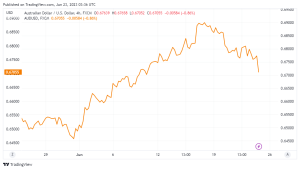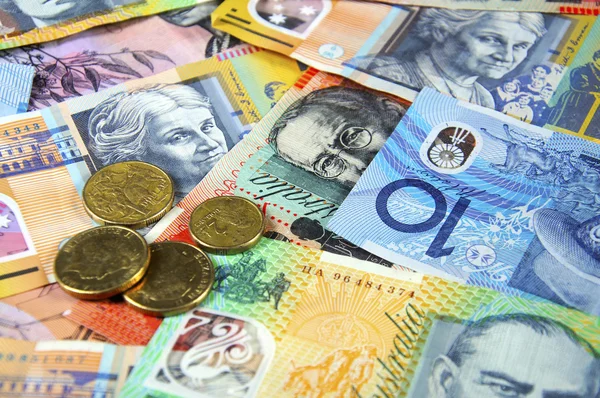A number of factors continue to pressure the AUDUSD pair and drive the USD higher.
The AUDUSD pair experiences selling pressure for the second day in a row on Friday. Which also marks the fifth day in a downward trend in the previous six. During the Asian session, the pair slips to a two-week low. Spot prices are currently down 0.60 percent on the day and seem vulnerable to continuing. Their recent decline from a nearly four-month peak reached last week. They are trading in the 0.6715 range.
On Friday, the US Dollar (USD) makes some further progress in a bullish direction. And builds on the previous day’s solid recovery move from its lowest level since May 11. Which is considered as a major pressure point for the AUDUSD pair. Jerome Powell, the chairman of the Federal Reserve (Fed). Reiterated during his two-day congressional testimony his belief that interest rates will likely increase once more this year to counter persistently rising inflation. This helps the safe-haven dollar and pulls money out of the risk-averse AUDUSD. Combined with concerns about a global economic slowdown and a softer risk tone.
The potential for more losses will be opened up by some follow-through selling below the 100-day SMA.
A look at the AUDUSD pair’s intraday decline from a technical perspective shows. That it has dragged it below the 38.2% Fibonacci retracement level of the current rise from the YTD low reached in May. And that it is now teetering on the 100-day Simple Moving Average (SMA). Near the 0.6690-0.6680 confluence. Which includes the crucial 200-day SMA and the 50% Fibo level. Buyers are more likely to enter the market in the event of a following dip. This should serve as a turning point; if it is convincingly broken. The current rejection drops from the 0.6900 mark, or the nearly four-month high achieved last Friday, will be extended.

The AUDUSD pair can then quicken its decline in the direction of the 0.6625 region, or the 61.8% Fibo level, on the way to the 0.6600 round-number level. The bias will move in favor of bearish traders after some follow-through selling, which will open the door for a decline into the 0.6545-0.6540 intermediate support level. After that, spot prices may attempt to test the psychological level of 0.6500 before eventually falling to the YTD low. May saw a touch in the 0.6460-0.6455 range.
On the other hand, the 0.6730 zone, or the 38.2% Fibo level, currently appears to operate as a quick barrier in front of the daily peak, close to the 0.6765-0.6770 area.
The next significant obstacle is estimated to be located close to the 0.6800 level, or the 23.6% Fibo level. The AUDUSD pair will rise towards the 0.6855-0.6860 resistance level if persistent strength is seen above the latter, indicating that the corrective downturn has ended. Then, spot prices can try again to break beyond the 0.6900 barrier.









